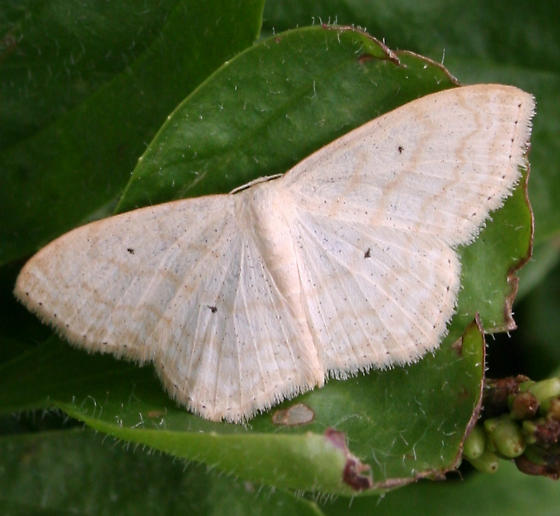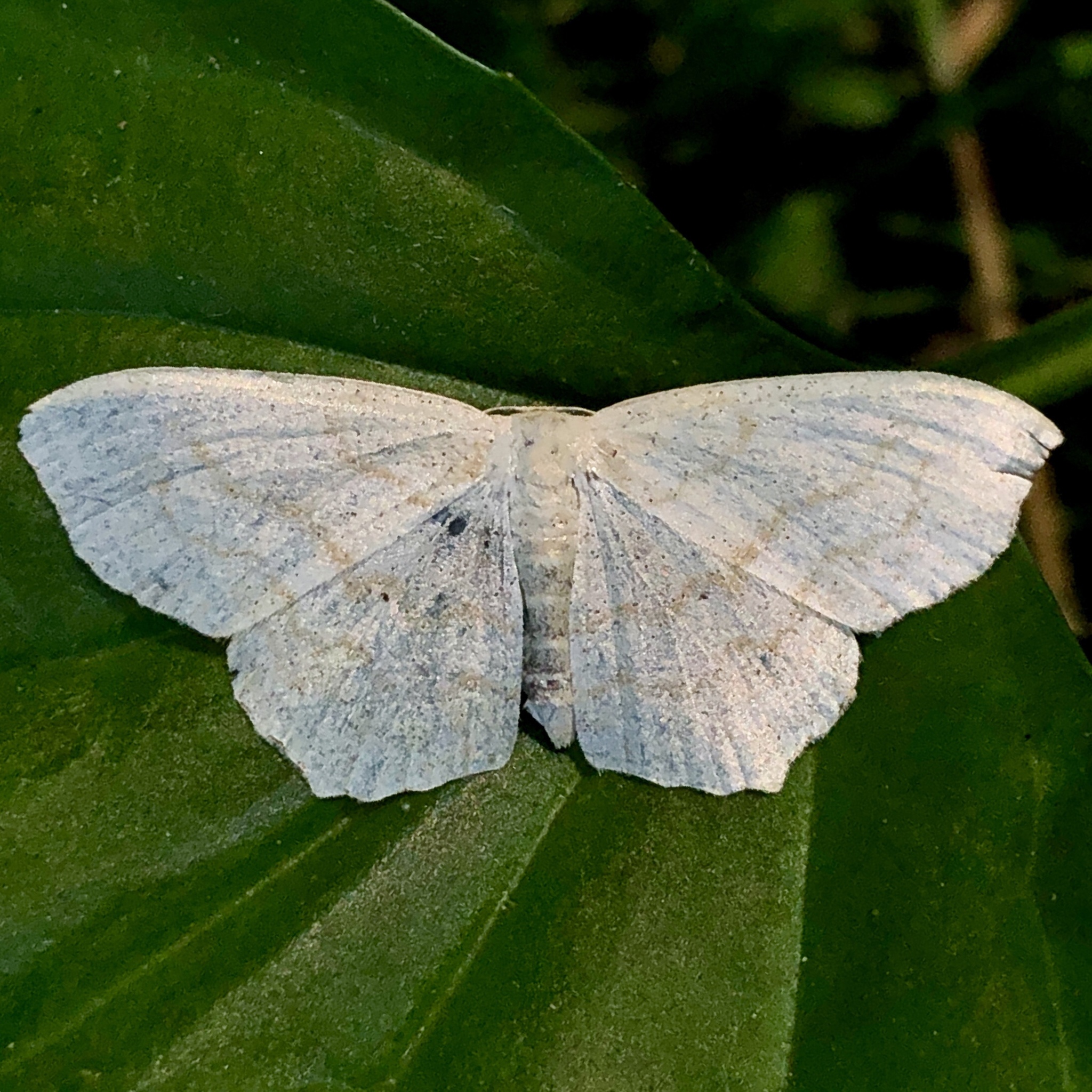Map Snapshot

























1,381 Records
Description
Compare Simple Wave Moth.
Relationships
Host plants include Black Chokeberry (Database of the World's Lepidopteran Hostplants).
Seasonality Snapshot
Use of media featured on Maryland Biodiversity Project is only permitted with express permission of the photographer.
A Large Lace-bordered Moth in Allegany Co., Maryland (6/28/2015).
View Record Details
Media by
Ashley Bradford.
A Large Lace-bordered Moth in Kent Co., Maryland (6/1/2015).
View Record Details
Media by
Nancy Martin.
A Large Lace-bordered Moth in Frederick Co., Maryland (8/9/2015). Verified by Roger Downer/BAMONA.
View Record Details
Media by
Mark Etheridge.
A Large Lace-bordered Moth in Calvert Co., Maryland (6/22/2013).
View Record Details
Media by
Bill Keim.
A Large Lace-bordered Moth in Prince George's Co., Maryland (6/7/2015).
View Record Details
Media by
Jesse Christopherson.
A Large Lace-bordered Moth in Anne Arundel Co., Maryland (6/6/2015).
View Record Details
Media by
Robert Aguilar, SERC.
A Large Lace-bordered Moth in Baltimore City, Maryland (8/23/2007). Determined by Kenneth Dwain Harrelson/BugGuide.
View Record Details
Media by
Thomas Wilson.
A Large Lace Border in Frederick Co., Maryland (8/30/2014). Determined by Hugh McGuiness/iNaturalist.
View Record Details
Media by
Mark Etheridge.
A Large Lace-bordered Moth in Frederick Co., Maryland (8/28/2016).
View Record Details
Media by
Richard Orr.
A Large Lace-bordered Moth in Frederick Co., Maryland (9/8/2016).
View Record Details
Media by
Mark Etheridge.
A Large Lace-bordered Moth in Anne Arundel Co., Maryland (6/14/2011).
View Record Details
Media by
Richard Orr.
A Large Lace-bordered Moth in Queen Anne's Co., Maryland (8/26/2015). Verified by Roger Downer/BAMONA.
View Record Details
Media by
Bill Keim.
A Large Lace-bordered Moth in Baltimore City, Maryland (8/19/2016). Verified by A. Hendrickson/BugGuide.
View Record Details
Media by
Derek Hudgins.
A Large Lace-bordered Moth in Montgomery Co., Maryland (8/31/2013).
View Record Details
Media by
Philip Brody.
A mating pair of Large Lace-bordered Moths in Talbot Co., Maryland (8/7/2014).
View Record Details
Media by
Jim Brighton.
Large Lace-bordered Moth in Baltimore Co., Maryland (6/12/2020). (c) Emily L. Stanley, all rights reserved.
View Record Details
Media by
Emily L. Stanley via iNaturalist.
A Large Lace-bordered Moth in Howard Co., Maryland (6/3/2013). Note the variation between photos. The black areas shown here are variable and may or may not be present.
View Record Details
Media by
Nancy Magnusson.
A Large Lace-bordered Moth in Worcester Co., Maryland (6/15/2013).
View Record Details
Media by
Bill Hubick.
Large Lace-bordered Moth in Kent Co., Maryland (6/8/2019). (c) Judy Gallagher, some rights reserved (CC BY).
View Record Details
Media by
Judy Gallagher.
A Large Lace-bordered Moth in Allegany Co., Maryland (6/6/2015).
View Record Details
Media by
Kimberly Booth.
A Large Lace-bordered Moth in Cecil Co., Maryland (8/31/2014).
View Record Details
Media by
Shannon Schade.
Large Lace-bordered Moth in Montgomery Co., Maryland (6/16/2019). (c) spyingnaturalist, some rights reserved (CC BY-NC).
View Record Details
Media by
spyingnaturalist via iNaturalist.
Large Lace-bordered Moth in Howard Co., Maryland (6/12/2020). (c) emilio c, some rights reserved (CC BY-NC).
View Record Details
Media by
Emilio Concari.
A Large Lace-bordered Moth in Worcester Co., Maryland (8/23/2013).
View Record Details
Media by
Scott Housten.
A Large Lace-bordered Moth in Cecil Co., Maryland (8/26/2022).
View Record Details
Media by
Dave Webb.
Large Lace-bordered Moths in Howard Co., Maryland (8/9/2020). (c) Timothy Reichard, all rights reserved.
View Record Details
Media by
Timothy Reichard.
A Large Lace-bordered Moth caterpillar in Howard Co., Maryland (7/25/2015).
View Record Details
Media by
Bonnie Ott.
Source: Wikipedia
| Large lace-border | |
|---|---|

| |
| Gatineau Park, Quebec | |
| Scientific classification | |
| Domain: | Eukaryota |
| Kingdom: | Animalia |
| Phylum: | Arthropoda |
| Class: | Insecta |
| Order: | Lepidoptera |
| Family: | Geometridae |
| Genus: | Scopula |
| Species: | S. limboundata
|
| Binomial name | |
| Scopula limboundata | |
| Synonyms | |
| |
Scopula limboundata, the large lace-border, is a moth of the family Geometridae. It was described by Adrian Hardy Haworth in 1809. It is found in North America east of the Rocky Mountains. There is a single and unconfirmed record from Great Britain.

The wingspan is 25–30 millimetres (0.98–1.18 in). Adults are on wing from late May to late August or early September.
The larvae feed on apple, blueberry, clover, dandelion, meadow-beauty, and black cherry.
References
[edit]Wikimedia Commons has media related to Scopula limboundata.
- ^ Sihvonen, Pasi (April 1, 2005). "Phylogeny and classification of the Scopulini moths (Lepidoptera: Geometridae, Sterrhinae)". Zoological Journal of the Linnean Society. 143 (4): 473–530. doi:10.1111/j.1096-3642.2005.00153.x.
External links
[edit]- McLeod, Robin (June 12, 2016). "Species Scopula limboundata - Large Lace-border - Hodges#7159". BugGuide. Retrieved November 29, 2018.
- "910567.00 – 7159 – Scopula limboundata – Large Lace-border Moth – (Haworth, 1809)". North American Moth Photographers Group. Mississippi State University. Retrieved November 29, 2018.
- "Lace-border Moth". Moths of Fermilab. Archived from the original July 21, 2011.
- "Large Lace Border Moth Scopula limboundata #7159". PBase.
- Lotts, Kelly & Naberhaus, Thomas (2017). "Large Lace-border Scopula limboundata (Haworth, 1809)". Butterflies and Moths of North America. Retrieved November 29, 2018.


























